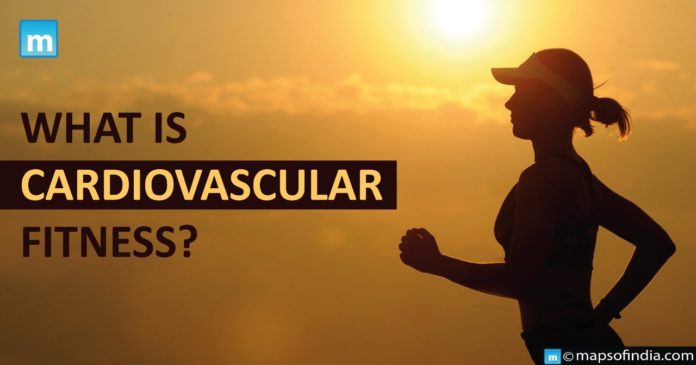Cardiovascular fitness refers to the body’s performance in a particular exercise for an extended duration where it holds the potential to sustain it. It is called cardiorespiratory fitness (CRF) and maintains the capacity to deal with challenging situations.
It lowers the risk of heart disease by maximising the efficiency of the heart, lungs and blood vessels. The better it is to pump blood through your body, The less taxing on the heart as it becomes simpler to pump the blood throughout the body.
Cardiovascular exercises enhance the heart’s contraction strength, the elasticity of blood vessels and the process of blood maintaining oxygen levels. For instance, a marathon runner would have a very high level of cardiovascular fitness, but their muscles could be weak due to improper strength training as the same muscles are worked upon.
How to achieve cardiovascular fitness?
- Change of activities: This requires changing the equipment with different types of training. One can pursue swimming, biking, running, sledge pushing, circuit training, battle ropes, and more can be cycled on a weekly or on daily basis to maintain efficiency.
- Focus on intensities: The heart rate monitor is significant for intensities. If someone exercises within 60-80% of the maximum heart rate, optimal physiological outcomes can be achieved. It should be noted with every exercise for cardiovascular fitness.
- Rest and resume: One should look for more tasks which require strength and maximise the aggregate number of intervals in a specific workout. A short break is necessary to maintain progress at all levels.
Bronson cardiothoracic surgeon Dr Alphonse DeLucia states, “Running is an exercise that I always squeeze into my busy schedule because I know it gives me lasting cardiac health benefits.”
Consistency is key to improving cardiovascular fitness, including practising steady-state training and interval training. Steady-state training is a form of cardio comprising walking, running, using the elliptical, or doing some other cardio activity at an average pace for 20 or more minutes.
One should develop endurance in the body where the heart and lungs remain longer while on it, whereas interval tanning consists of going fast or hard with recurring workout intervals. It is more powerful in developing than steady-state training. It burns calories if someone practises it at least three times a week.
“Running 30 minutes a few times per week helps reduce low density lipoprotein (LDL), the “bad” type of cholesterol and increases the high density lipoprotein (HDL), the “good” type of cholesterol. High blood pressure also becomes normalised through consistent physical activity,” adds Dr Delucia.
A person can follow the “12-minute run test”, which is used in numerous settings, such as military training. It has been used to measure aerobic health for many decades. Following are the ways to chuck it: a) Take a stopwatch or timer b) Warm up before the test by walking, jogging or practising soft stretches c) Run at a steady pace, as fast as you can, with no unnecessary fatigue, for a complete duration of 12 minutes d) Cool down, post the test process, and register the distance you covered, in miles using a decimal figure.




